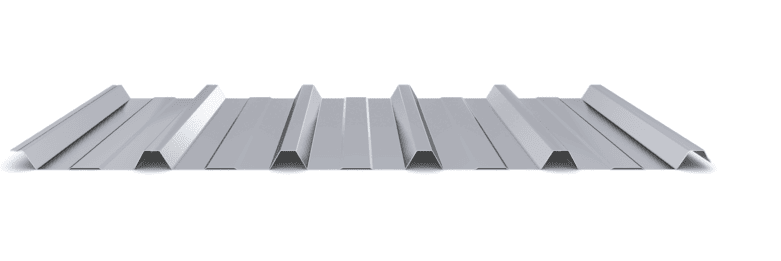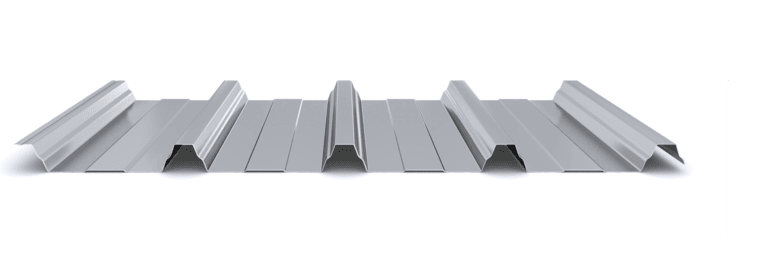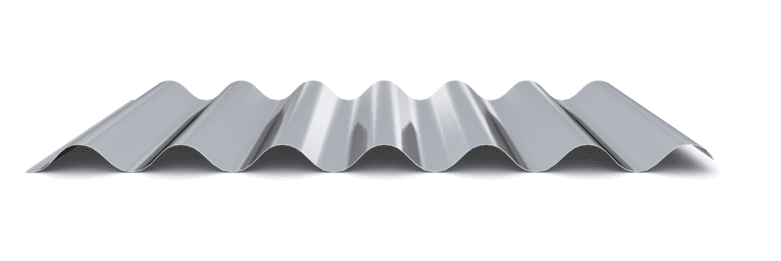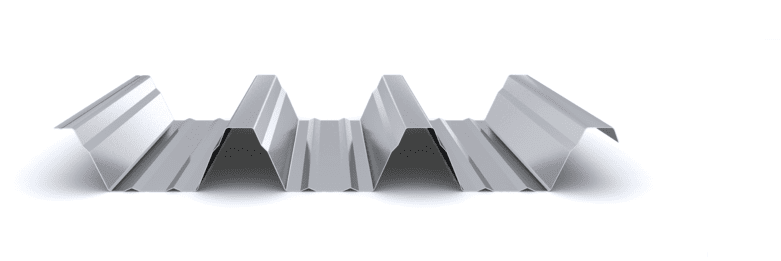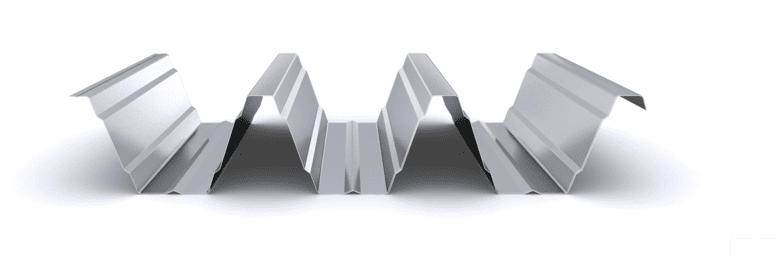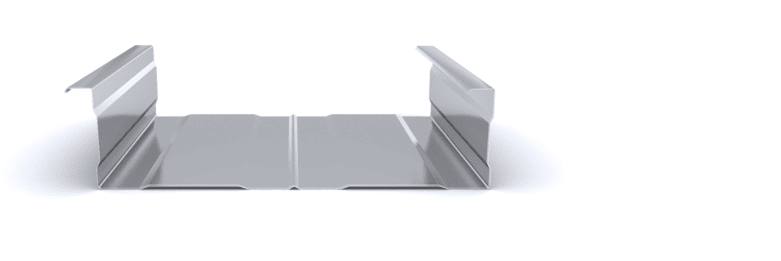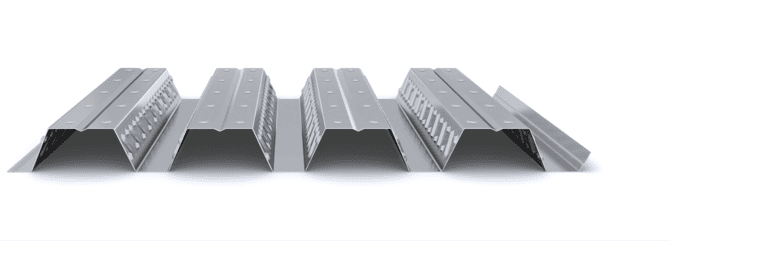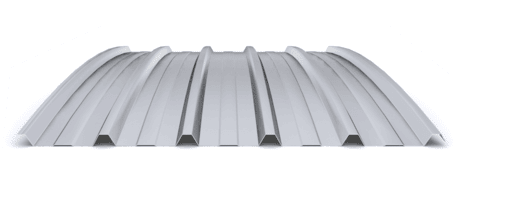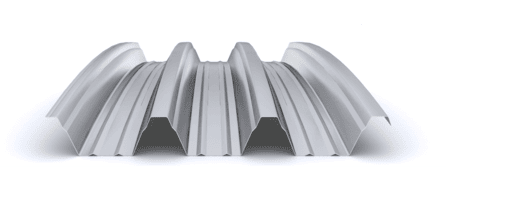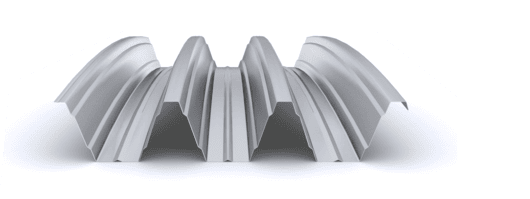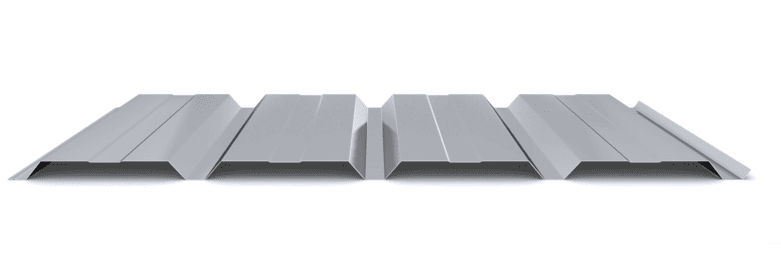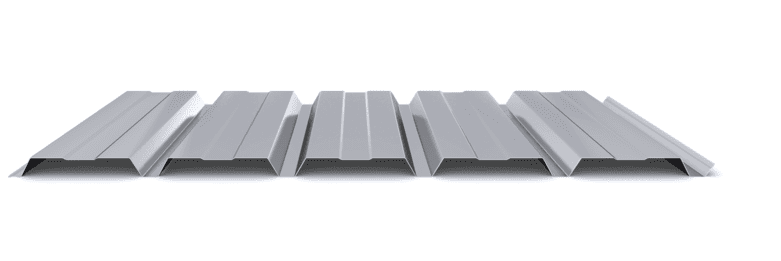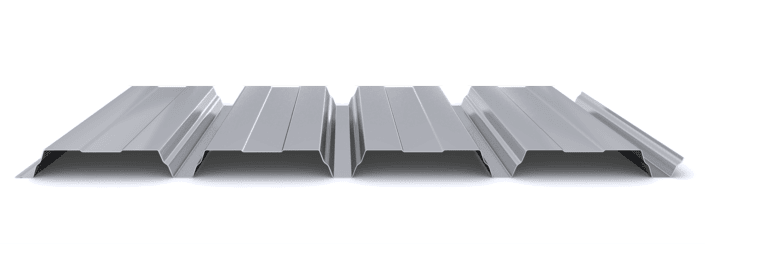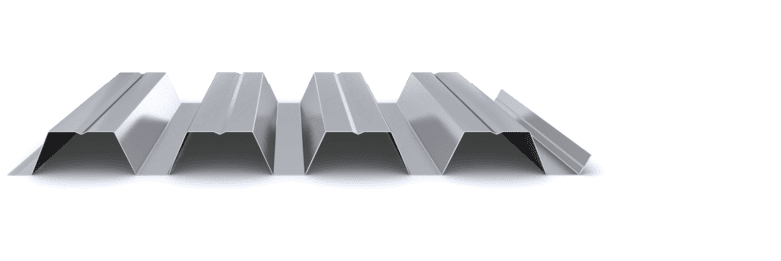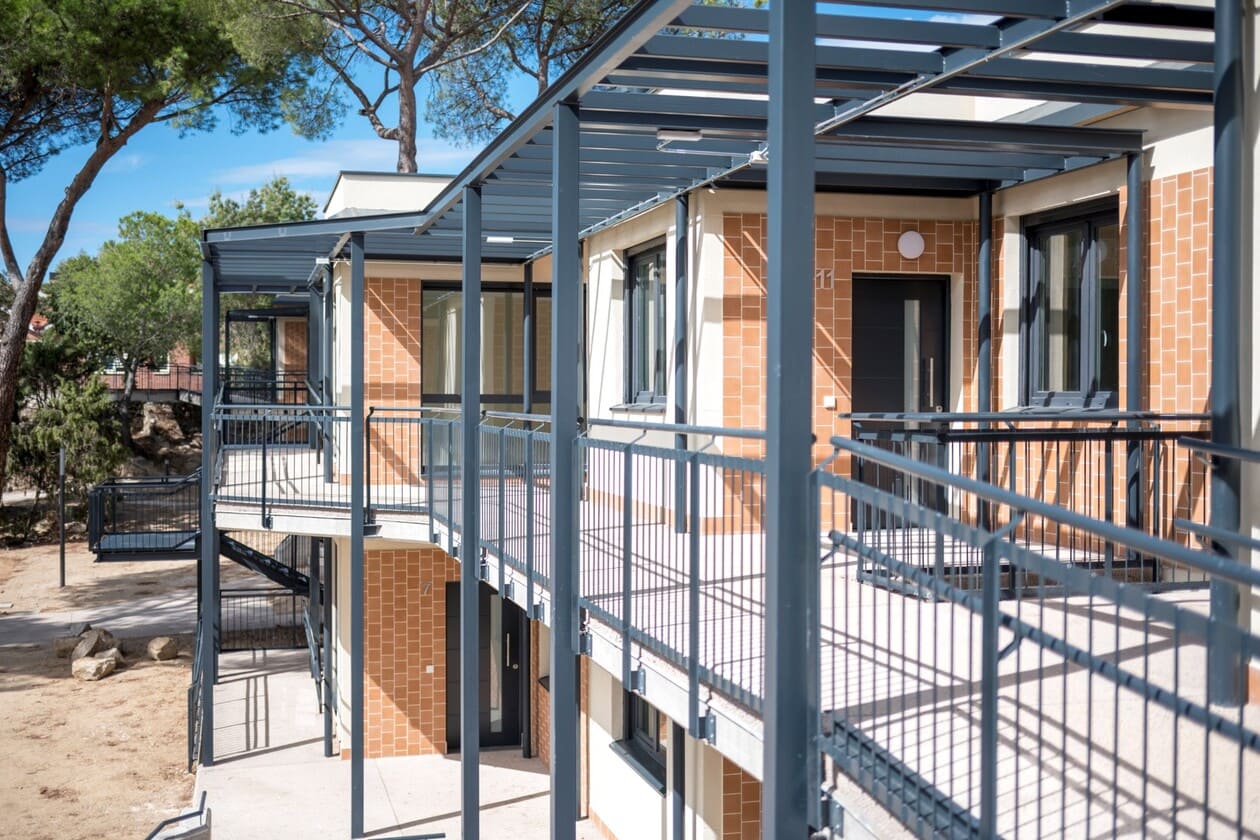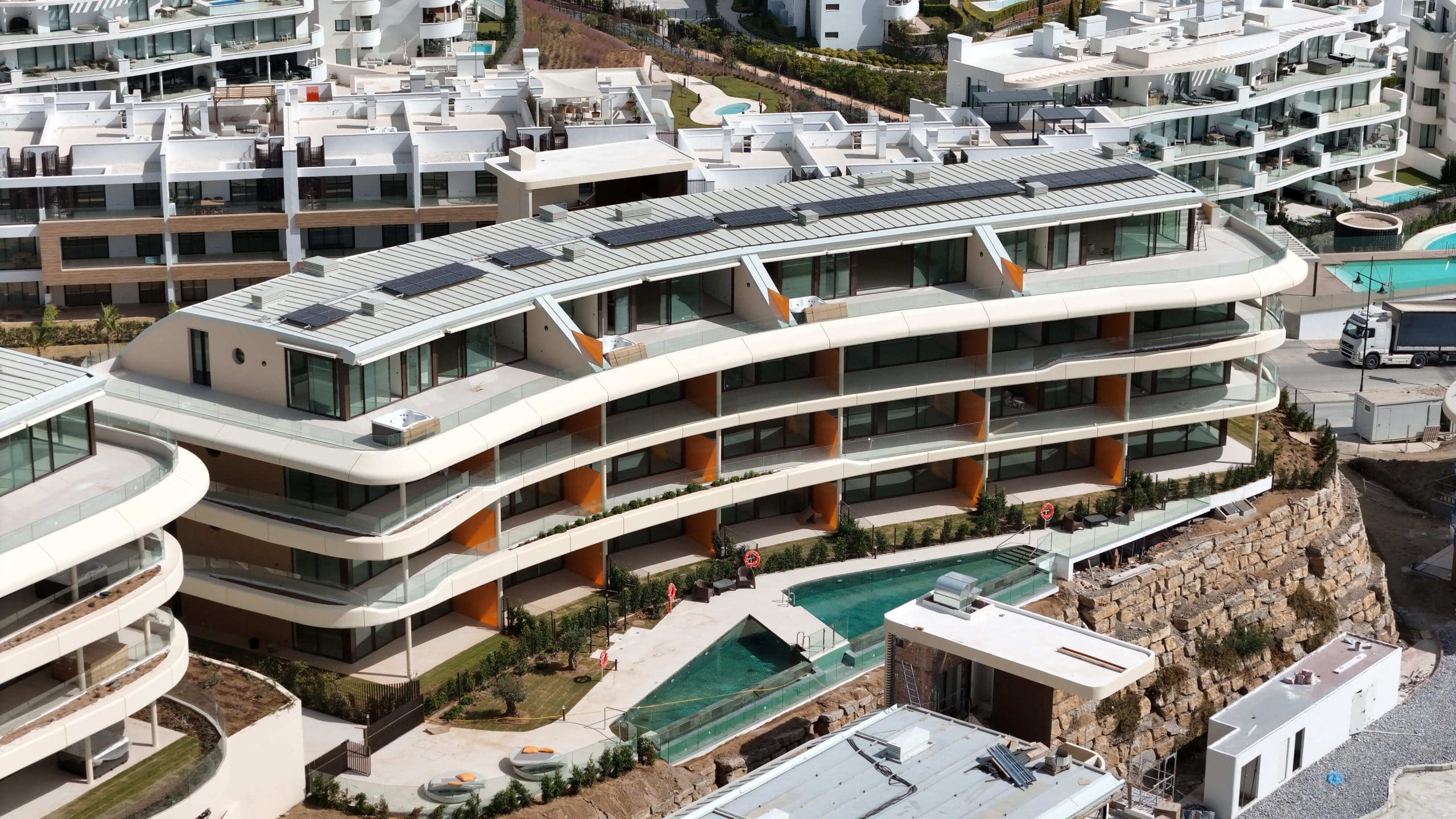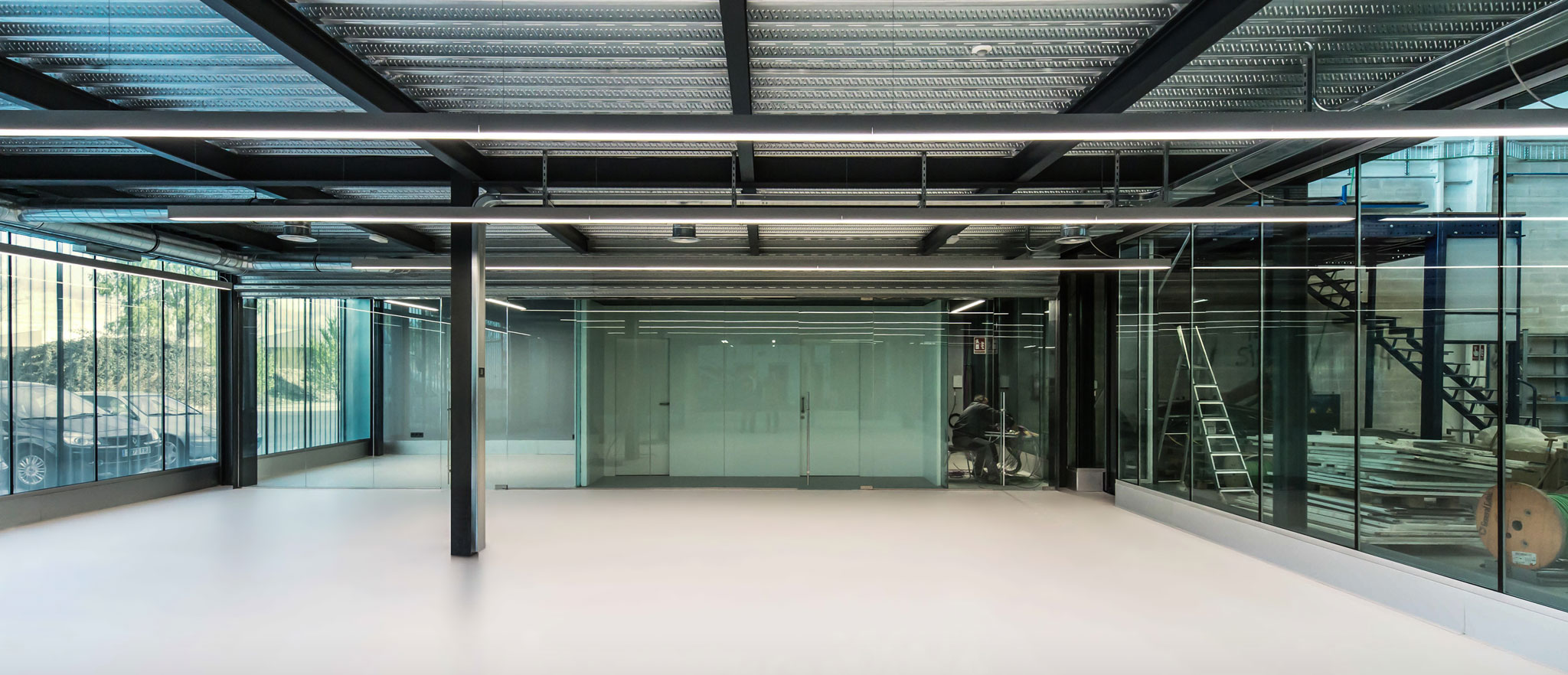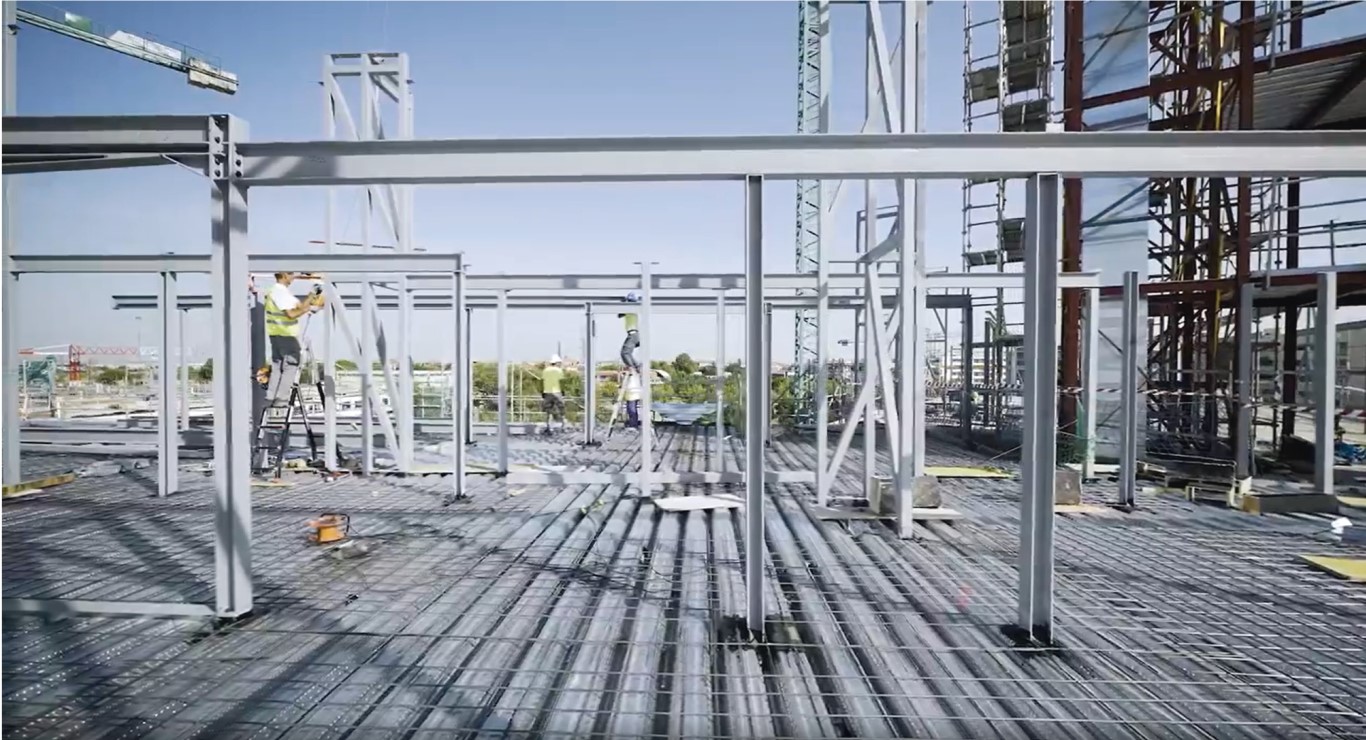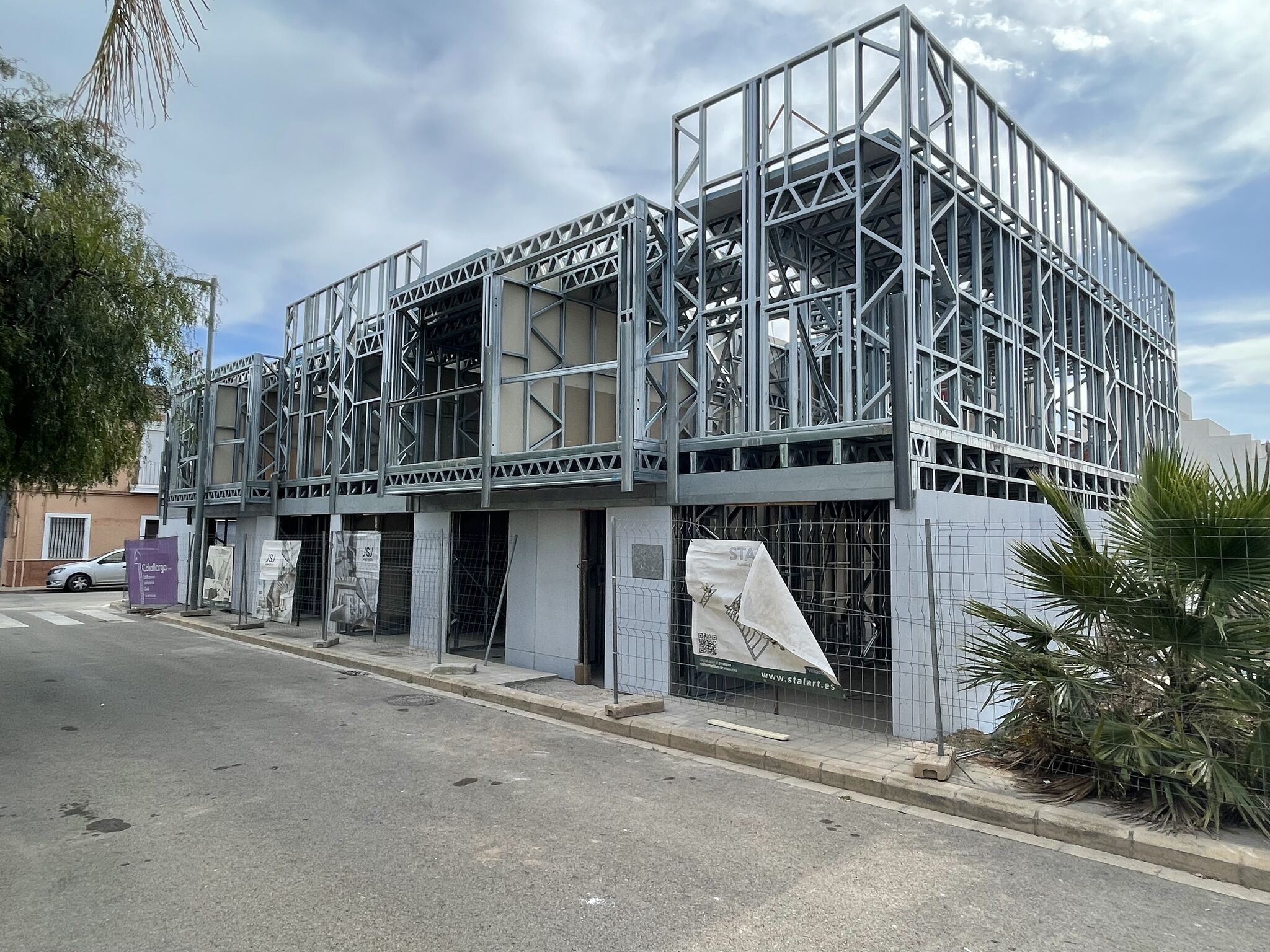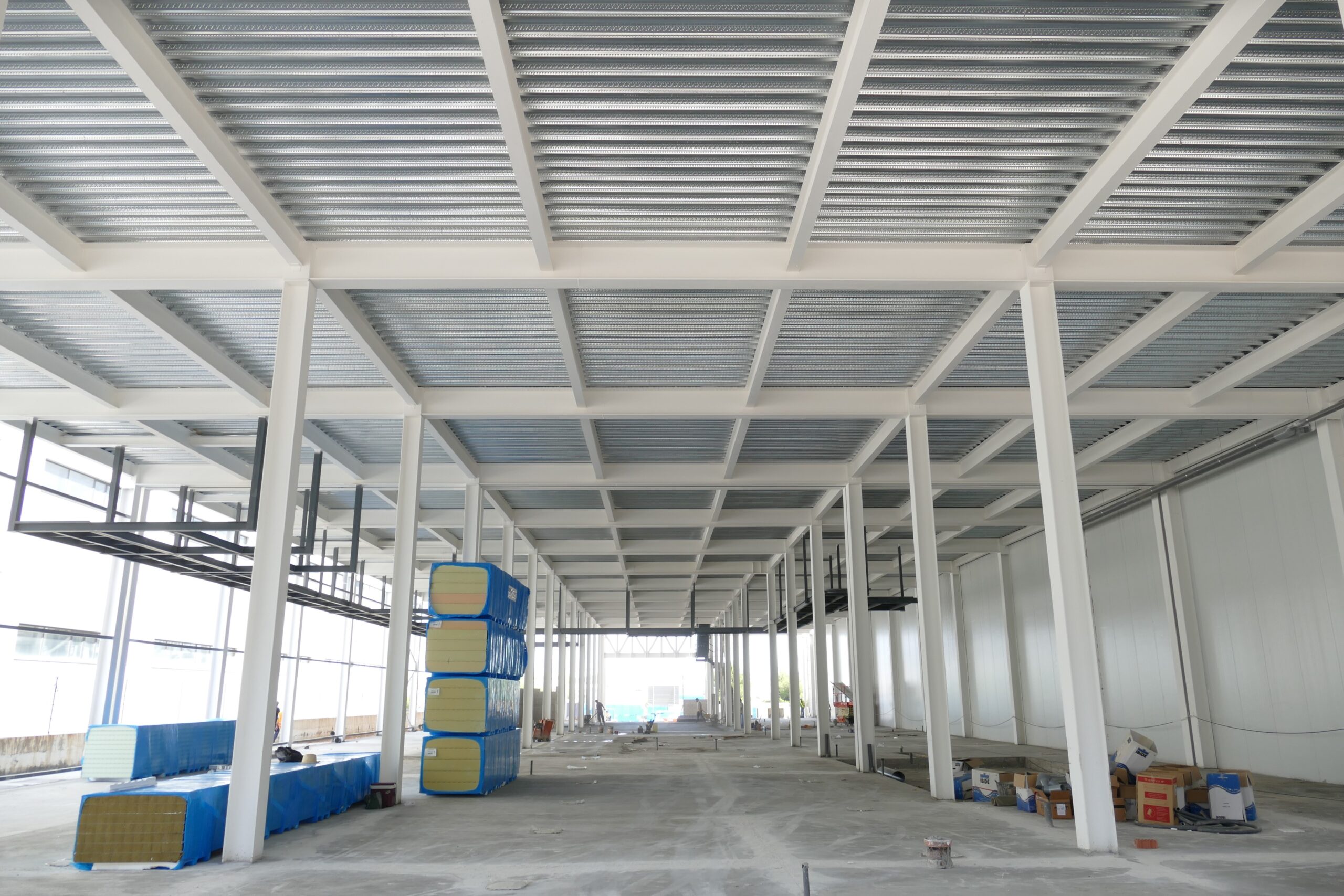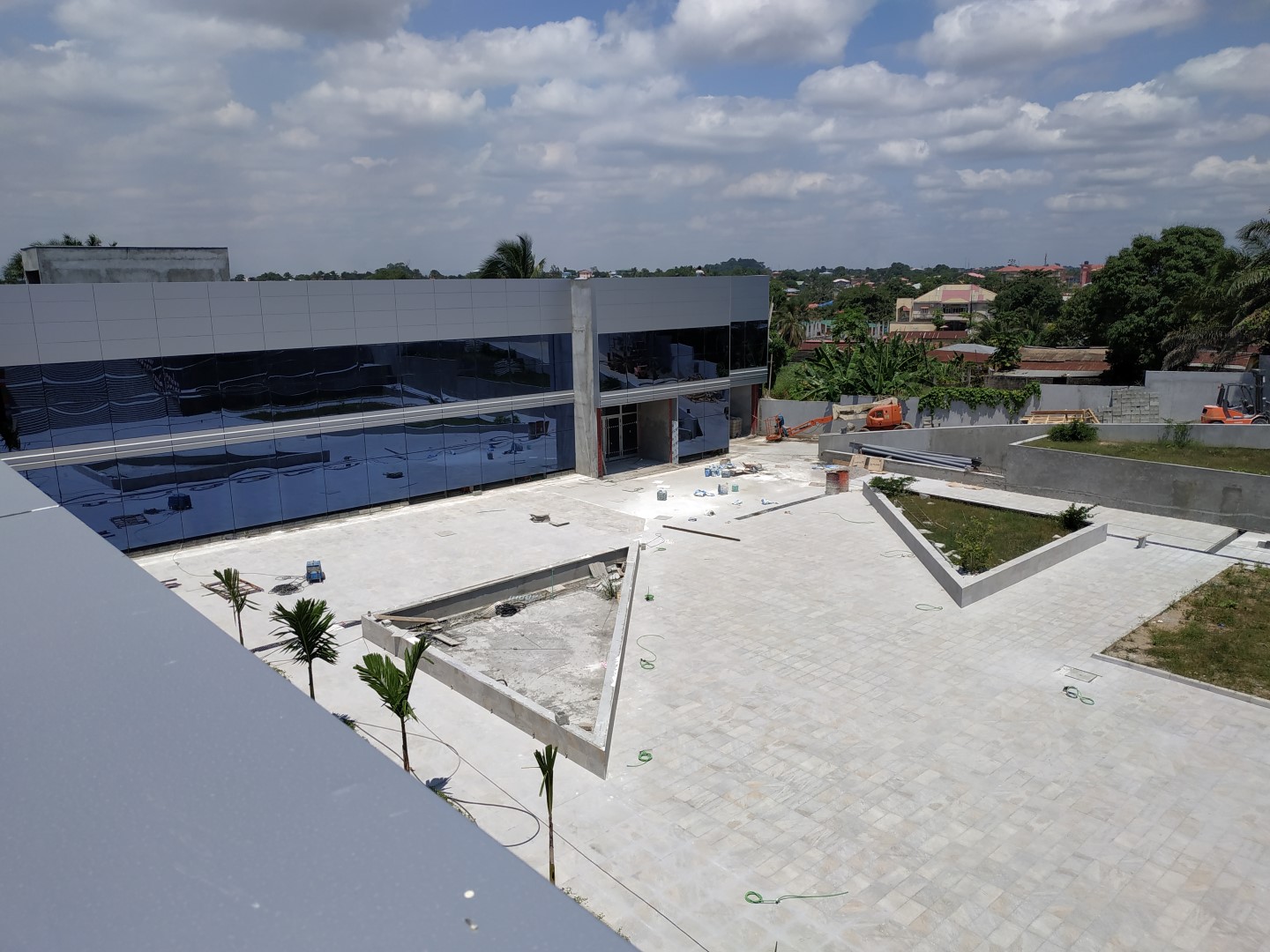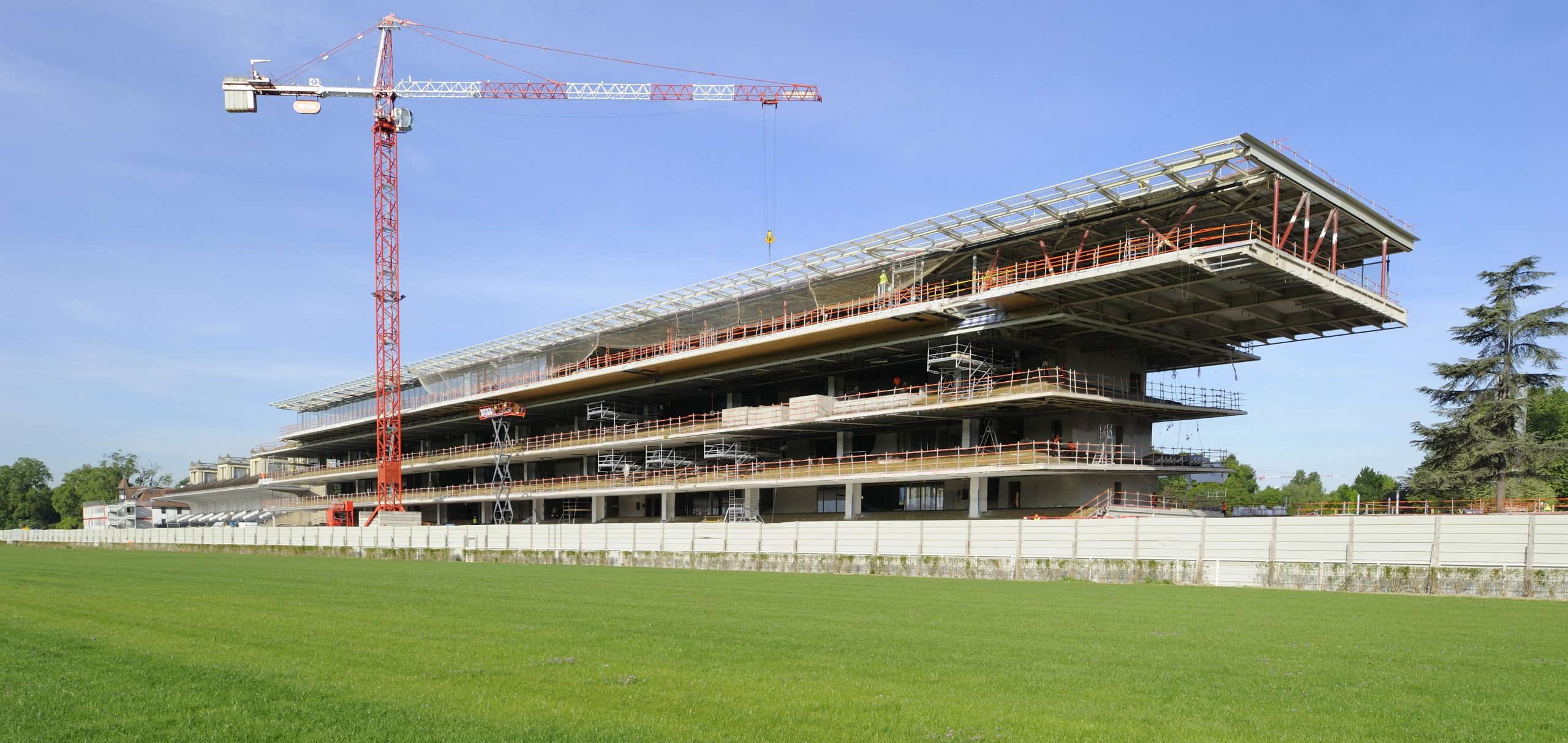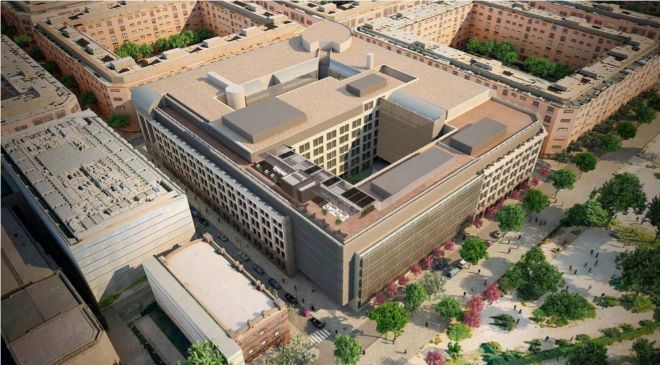The composite slab system is made up of a galvanized metal composite floor deck that serves as formwork for a concrete slab executed in situ. Once the concrete has reached the characteristic strength of the project, the ribbed profile and the concrete slab work together.
During the formwork phase, the profile supports the loads of execution and pouring of the concrete. In the mixed phase, the profile collaborates with the concrete through specific embossing, acting as positive reinforcement and forming a mixed cross section. It is for this reason that the composite floor deck is also known as a composite or mixed slab.
Using this solution, light slabs can be made, with a self-weight of less than 2 kN/m², through an agile and simple execution procedure, especially in those slabs that do not require shoring. In those cases in which shoring is not an impediment, greater separations between the support beams of the slab can be achieved.


